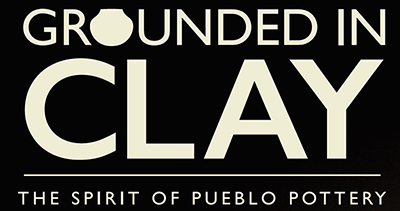Ehren Kee Natay
Kewa/Santo Domingo Pueblo, Diné/Navajo
Curator Ehren Kee Natay (Kewa/Santo Domingo Pueblo, Diné/Navajo) is a multidisciplinary artist residing in his hometown of Santa Fe. His principal creative medium is music, and he has been playing percussion since the age of ten. At age twenty-five, he began taking classes in polychrome pottery under the guidance of teacher Shawn Tafoya at the Poeh Cultural Center, Pueblo of Pojoaque. His latest work combines media to create multisensory art experiences.
Categories:
Tribal Affiliations:
Artwork Affiliations:
Ehren chose the following for the Grounded in Clay exhibit:
Jerry and His Cats
Jerry is a friend and classmate of mine at the Poeh Cultural Center. I chose to include Jerry’s piece in this exhibition because I watched him make it from scratch. We gathered the clay from the land as a class and mixed its components of ash, clay, and water in the traditional way, with our feet. We divided the clay among classmates and began our assignment, to create a piece inspired by contemporary design.
It was nice to set out together as a group with a common goal and working at one large table. When you are side by side, learning is accelerated. You get to see the experimentation, the mistake-making, and the risk-taking of each person as they work, and you are immediately able to implement this knowledge in your own creations. There was never a class when we did not share a meal together. It felt comfortable and home-like when we were in class, eating, working, laughing, and sharing. In this communal setting, our stories, jokes, and inspirations fuel our effort because everyone participates in collective creation.
With this piece in particular, I remember Jerry’s story about his cat. It would jump up onto his kitchen counter, and had already knocked two of his finished bowls over the edge, making them shatter on the floor. A playful joke emerged in class, and we would tease, “You’d better be careful with those cats, Jerry. Your bowl might crack!” In my mind, it was a risk to put those cat-like mountain-lion figures on the rim of the bowl. They seemed fragile, as though they would dry quicker than the rest of the pot, causing cracks. The drying process takes several weeks, and when I observed that Jerry’s contemporary cat-like ornaments had survived the drying process, I realized how resilient this batch of clay was. It led me to take similar risks with my clay that I would normally not have attempted. This is the advantage of communal learning, a way in which our people have always created pottery, together as a group. We work to assist one another when our teacher is busy, and all pitch in our ideas to help solve problems.

